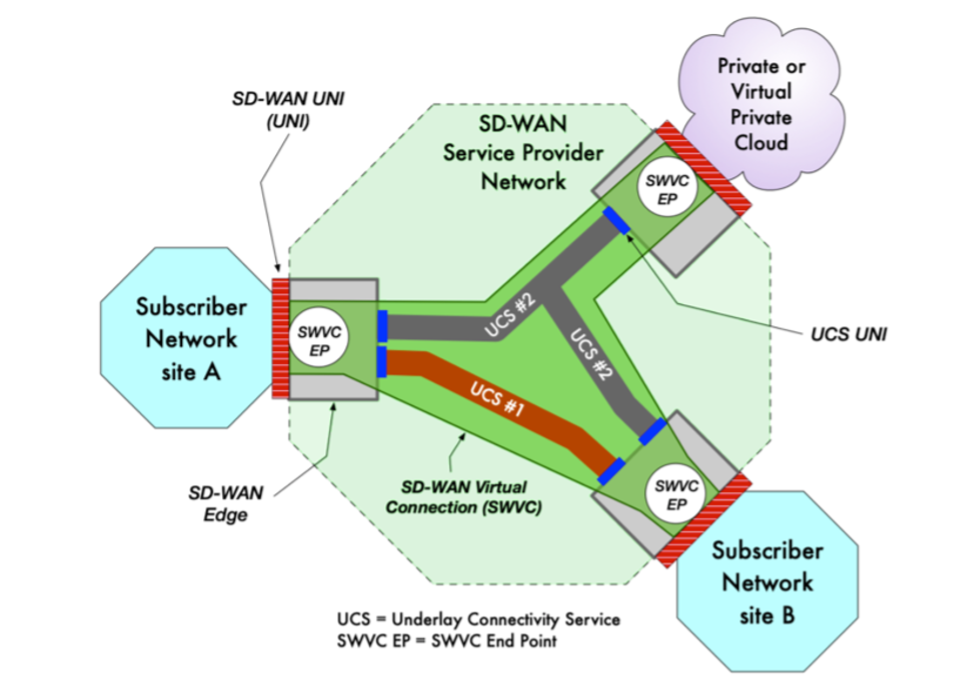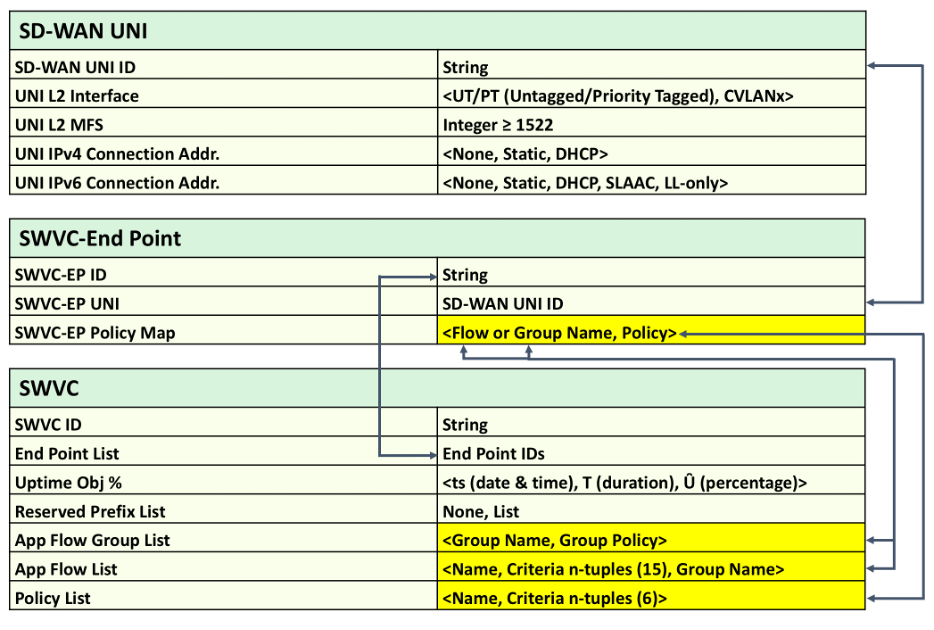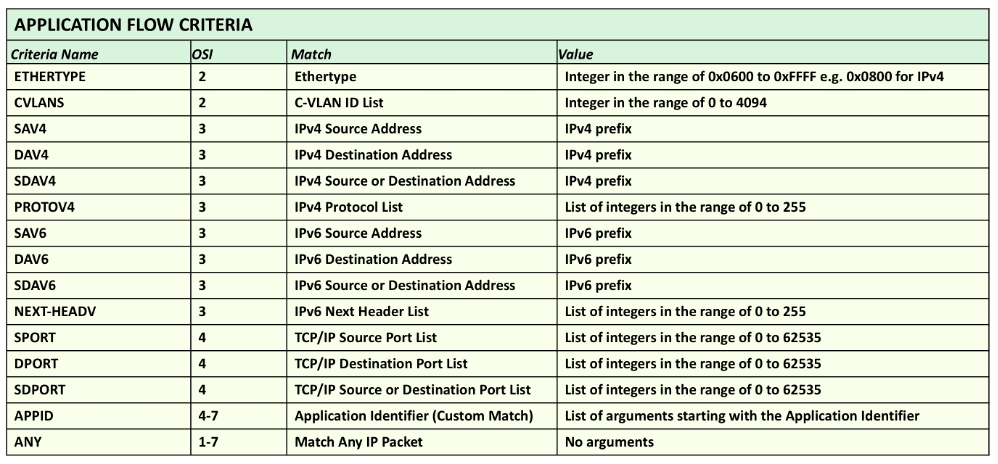
on Posted on Reading Time: 3 minutes
Making sense out of the separate but related attributes specified in MEF 70.1 can be challenging, especially if you are new to the topic of SD-WAN. As we deliver SD-WAN training and certification, one common challenge for students is to learn which attribute is associated with which SD-WAN component. To help clarify, let’s take a quick look at a standard MEF 70.1 SD-WAN topology to help illustrate which attributes are associated with which component.
Also, to help simplify the learning process, it is good to note that MEF 70.1 only specifies service attributes for three of the many components that make up an SD-WAN solution:
- SD-WAN Virtual Circuit (SWVC)
- SWVC End Point (SWVC EP)
- SD-WAN User to Network Interface (UNI)


The topology graphic above illustrates an SD-WAN Virtual Connection (SWVC) in a dark green which interconnects the three sites of this topology. You can refer to the SWVC as the first major component of SD-WAN because, from the perspective of a single SD-WAN subscriber, it is the topology seen and used by that given subscriber.
The SWVC attributes highlighted in the table above need criteria arguments to be associated with a specific attribute. Individual criteria are not considered to be attributes themselves but rather, are grouped together into “tuples” (a tuple is a finite ordered list (sequence) of elements) and being grouped together form an instance of a “list” attribute. For example, the Application Flow List attribute is made up of one or more application flow(s). Each Application Flow is identified by a 3-tuple and each 3-tuple in the list is made up of the three criteria arguments:
- Application Flow Name
- List of Criteria (note there are 15 different criteria arguments available from which to choose)
- Application Flow Group Name
As traffic enters the SD-WAN from a subscriber’s site, each IP packet is evaluated at the SD-WAN UNI based on the layer 2 VLAN information (Untagged, Priority Tagged, or a customer‘s VLAN number [1-4094]).
Next, the packet is associated with the SWVC End Point (there can be only one SWVC EP for each UNI). The SWVC End Point assigns every IP packet to the proper Application Flow based on packet contents and each Application Flow is associated with a specific policy which applies required QoS criteria needed from the physical Underlying Connection Service (UCS).
Note that for any given Application Flow, there may be more than one UCS available, and the policy is used to identify which UCS path will be selected.
Here are the criteria tables used to configure the SWVC Attributes for Application Flows and Policies.


Hopefully this primer on SD-WAN will be a useful tool for clarifying some of the confusion that often accompanies the introduction to SD-WAN components and attributes.
In closing, if you are studying for or considering taking the MEF SDCP exam or other training, let me recommend one my favorite learning methods. It’s called Digital Mentoring. I’m the kind of person that enjoys reading through training materials on a self-study basis. The upside is I can study at my own pace and any schedule that fits my availability. The downside is I don’t have the help of an experienced mentor to answer questions and fill in the gaps quickly as I study. Consider a digital mentoring program which can provide flexibility similar to self study as well as address different learning styles, provide access to knowledgeable instructors, and student peers.
Learn More
Learn more about MEF 3.0 SD-WAN Service Attributes and Service Framework Standard.

